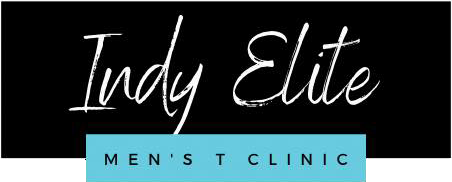Testosterone is a hormone that plays a crucial role in various bodily functions, including the development of male secondary sexual characteristics, muscle mass, and bone density. There are several delivery methods for administering testosterone replacement therapy (TRT) to individuals with low testosterone levels. Each method has its own pros and cons, and the choice of delivery method should be based on an individual’s specific needs and preferences, as well as medical guidance from a healthcare provider. Here are the most common methods:
- Intramuscular Injections:
- Pros:
- Effective and reliable method for delivering testosterone.
- Less frequent injections, typically once or twice a week.
- Ease of changing dosage.
- Cons:
- May be painful and require a healthcare professional for administration.
- Possible fluctuations in testosterone levels between injections if given less frequent than once a week.
- Can see increase in erythrocytosis (elevation in hemoglobin and hematocrit) more than transdermal.
- Pros:
- Subcutaneous Injections:
- Pros:
- Similar to intramuscular injections but with a smaller needle and injection into the fatty tissue just beneath the skin.
- Usually less painful than intramuscular injections.
- Cons:
- Still requires regular injections.
- Potential for fluctuations in hormone levels.
- May cause lumps under fat tissue until absorbed.
- Pros:
- Transdermal Patches:
- Pros:
- Convenient and non-invasive.
- Steady release of testosterone throughout the day.
- Cons:
- Skin irritation or allergic reactions at the patch site.
- May not stick well.
- Limited dosage options.
- Pros:
- Transdermal Gels or Creams:
- Pros:
- Non-invasive and easy to apply.
- Provides a steady release of testosterone.
- Cons:
- Risk of accidental transfer to others (especially with skin-to-skin contact).
- Potential for skin irritation.
- Requires daily or twice daily application.
- Pros:
- Buccal Tablets:
- Pros:
- Convenient and non-invasive.
- Absorbed through the mucous membranes of the mouth.
- Cons:
- May cause irritation or discomfort in the mouth.
- Dosage may need adjustment to maintain optimal levels.
- Not nearly as effective as other routes of administration.
- Dissolves slowly over several hours.
- Pros:
- Implants or Pellets:
- Pros:
- Long-lasting (typically every 3-6 months).
- Consistent testosterone levels, however can still have peaks and valleys.
- Cons:
- Requires a minor surgical procedure for insertion.
- Limited reversibility if side effects occur.
- Scar tissue can build up after time.
- Pellets can dislodge and come out of skin.
- Must avoid strenuous physical activity and prolonged water exposure for several days after implantation.
- Absorption can be irregular if not of good quality.
- Pros:
- Nasal Gel:
- Pros:
- Non-invasive and easy to administer.
- Cons:
- Limited long-term data on its use.
- Potential for nasal irritation.
- Typically dosed three times a day.
- Pros:
- Oral Tablets (less common):
- Pros:
- Convenient and non-invasive.
- Cons:
- Can stress the liver, potentially leading to liver damage.
- May require frequent dosing throughout the day.
- Pros:
It’s essential to work closely with a healthcare provider to determine the most suitable method of testosterone delivery based on your specific needs, preferences, and medical history. Regular monitoring of hormone levels and potential side effects is critical when undergoing testosterone replacement therapy to ensure safety and effectiveness. The choice of delivery method may also depend on factors such as the underlying cause of low testosterone and any coexisting medical conditions.
Indy Elite Men’s T Clinic offers testosterone injections and compounded testosterone creams as we feel these are far more superior, more cost-effective, and safer than other modes of administration. We only use compounding pharmacies that are nationally licensed as PCAB accredited compounding pharmacies, providing you with high quality compounded medicine from the United States.
